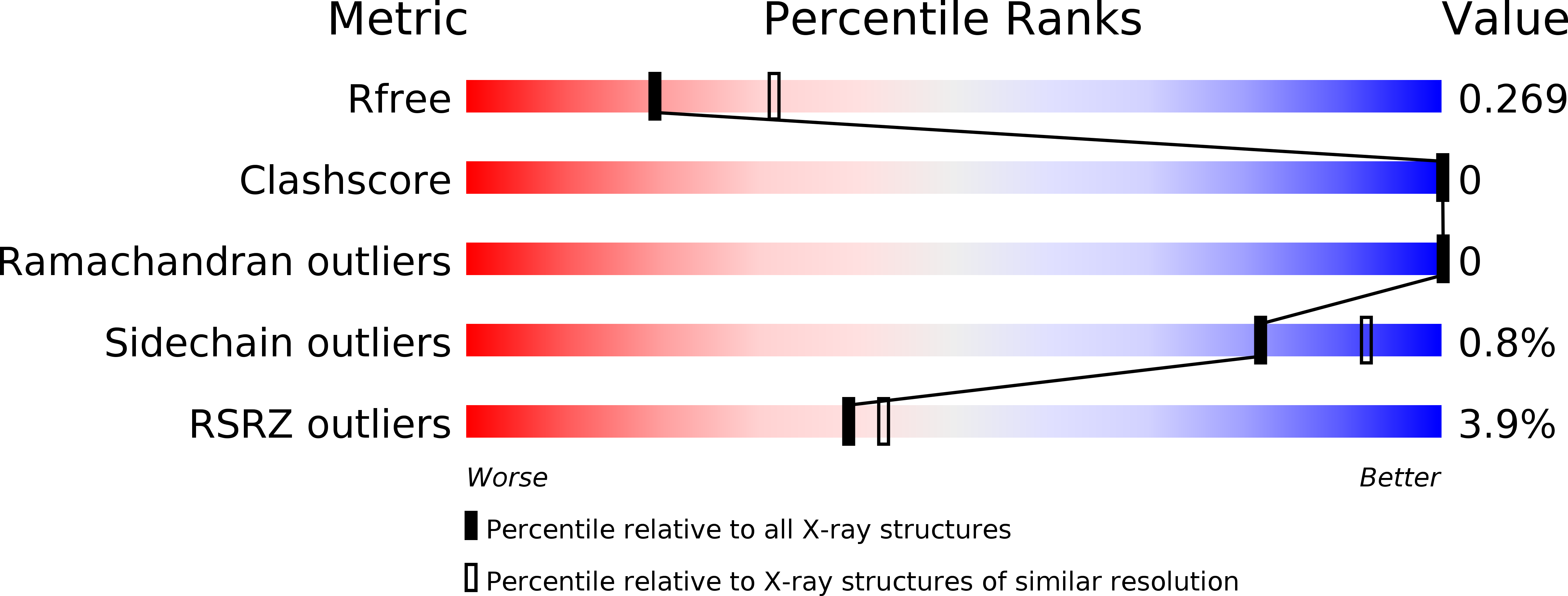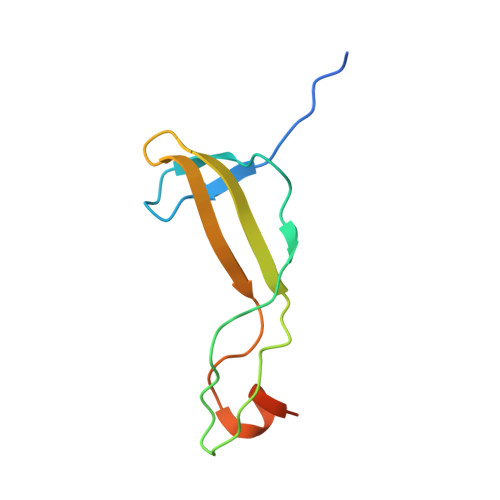Crystal structure of the Melampsora lini effector AvrP reveals insights into a possible nuclear function and recognition by the flax disease resistance protein P.
Zhang, X., Farah, N., Rolston, L., Ericsson, D.J., Catanzariti, A.M., Bernoux, M., Ve, T., Bendak, K., Chen, C., Mackay, J.P., Lawrence, G.J., Hardham, A., Ellis, J.G., Williams, S.J., Dodds, P.N., Jones, D.A., Kobe, B.(2018) Mol Plant Pathol 19: 1196-1209
- PubMed: 28817232
- DOI: https://doi.org/10.1111/mpp.12597
- Primary Citation of Related Structures:
5VJJ - PubMed Abstract:
The effector protein AvrP is secreted by the flax rust fungal pathogen (Melampsora lini) and recognized specifically by the flax (Linum usitatissimum) P disease resistance protein, leading to effector-triggered immunity. To investigate the biological function of this effector and the mechanisms of specific recognition by the P resistance protein, we determined the crystal structure of AvrP. The structure reveals an elongated zinc-finger-like structure with a novel interleaved zinc-binding topology. The residues responsible for zinc binding are conserved in AvrP effector variants and mutations of these motifs result in a loss of P-mediated recognition. The first zinc-coordinating region of the structure displays a positively charged surface and shows some limited similarities to nucleic acid-binding and chromatin-associated proteins. We show that the majority of the AvrP protein accumulates in the plant nucleus when transiently expressed in Nicotiana benthamiana cells, suggesting a nuclear pathogenic function. Polymorphic residues in AvrP and its allelic variants map to the protein surface and could be associated with differences in recognition specificity. Several point mutations of residues on the non-conserved surface patch result in a loss of recognition by P, suggesting that these residues are required for recognition.
Organizational Affiliation:
School of Chemistry and Molecular Biosciences, Australian Infectious Diseases Research Centre and Institute for Molecular Bioscience, University of Queensland, Brisbane, Queensland 4072, Australia.















